You might have heard that the so-called “sensory board for autism” is a common plaything in the preschools and therapy centers. It is a fun educational toy that encourages the baby’s ability to identify and process sensory experiences.
Video: Courtesy of University of Akron
But how do you make a sensory board for a certain kid with their own perks? What do you put on a sensory board for the late speaker, or a visually impaired child to let them have their best beneficial playtime?
In this article, we gathered the roundup of scientific researches, tips from trusted educational resources, and practical anecdotes from educators and caregivers. They share experiences and hints on tailoring a sensory board for every child’s personal needs.
What are the 5 benefits of the sensory play
- Research shows that sensory play builds nerve connections in the brain’s pathways, which lead to the child’s ability to complete more complex learning tasks.
- Sensory play supports language development, cognitive growth, fine and gross motor skills, problem-solving skills, and social interaction.
- This type of play aids in developing and enhancing memory.
- Sensory play is great for calming an anxious or frustrated child.
- This helps children learn sensory attributes (hot, cold, sticky, dry).(Source: EducationalPlayCare)
For the autism spectrum disorders
“Fine motor skills may be challenging to address because children with ASD can become overwhelmed by the different aspects of the activity. So continued exposure, persistence, and success with a task can make children with ASD all the more willing to participate in different fine motor activities.”
(Source: Children’s Hospital Los Angeles)
Activity wall panels are recommended to include in the sensory rooms by the NationalAutismResources.com, because:

- Fidgeting boards encourage sensory integration, fine motor skills, motor planning, cognitive development, and cause-effect understanding through play.
- Sensory boards are a great fidget tool to get the overloaded kids relaxed and unwinded.
For the sensory processing disorders
“Using sensory integration products is one key way to help a child with sensory processing disorder make sense of the world; additionally, these products are ideal for children who do not have sensory processing disorder, and these items can help children reach important developmental milestones.
One such sensory integration product is a sensory board, and you can purchase one or make one yourself. Including your child in the creation of a sensory board is a fun activity, and you can really tailor the board to your child’s needs.” (Source: SpecialNeeds.com)

“For example, a parent of a child who wakes during the night due to extreme sensitivity to sounds might set a goal of improving tolerance of ordinary noises and sleeping through the night. For a child who hates touching food, the goal might be to decrease touch sensitivity to the point that the child can comfortably eat a meal.” (Source: AutismSpeaks.org)
For the children with visual impairments
- Sensory play with the proper busyboard will give the opportunity to enhance sensory vocabulary and practice life skills in a calm and convenient environment;
- Pick a visually efficient color for the backdrop (red works great) and put a flat finish layer to avoid glare;
- Make sure that elements stand off the contrast background. Choose white metal for red background, black metal for yellow, etc;
- Avoid visual clutter. Put elements in a simple clear grid;
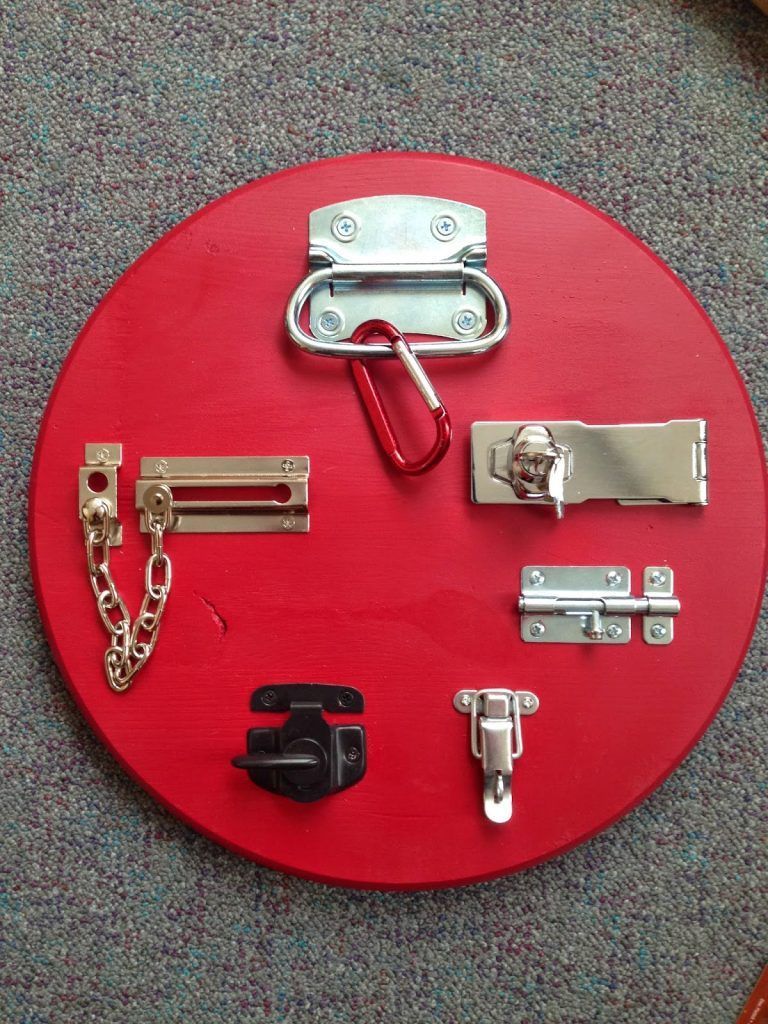
Source: A Different Kind of Vision
For the hearing impaired learners
There is a story on the internet shared by a mom who made a busy board to help her son exercise his first hearing implants. Basically, that was a toy for him to first practice listening. She put a bunch of the sound-making things on this board, and, obviously, a lot of love.
Among the elements that she chose:
- Various bells
- The speaking buttons to bring in beloved voices and songs
- A tin cake mold and a wooden spoon;
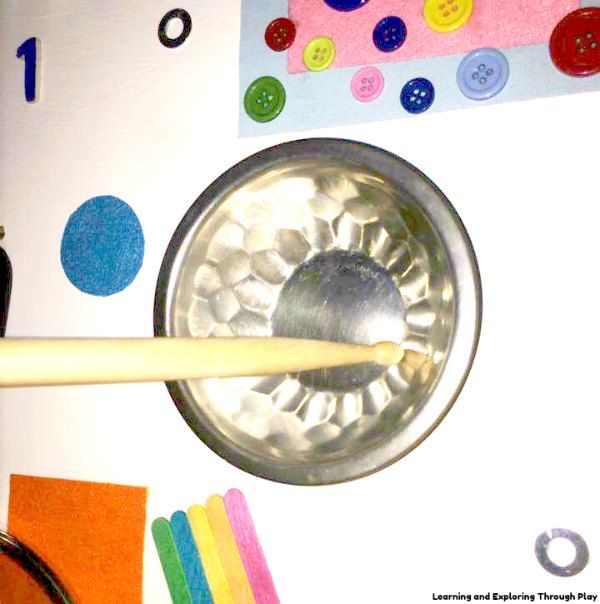
Read the full story here – Amy’s Blog “Learning And Exploring Through Play”
For the late speakers
This is a piece of our own story. My son Emir has struggled with his speaking for a while. Along with doing the drills prescribed by a therapist, I was closely tracking any use of speech that Emir was showing. To my surprise, one of the breakthroughs happened through a busyboard.

He was playing a pretend storm with his Ship activity board. And all of a sudden, he started trumpeting in a piece of plastic pipe in full voice, loud and clear. “Full speed! Full speed! Go ahead!”
I noticed how he was feeling more confident practicing with a toy, in a play, rather than person-to-person. Since then we were shouting the drills into this pipe, in turns. It was hilarious, but what’s more important, really helpful. Good that it was there!
Items for busy board that encourage speech exercises in play:
- a piece of the plastic pipe can work as the pretend bullhorn.
- teach your baby to say “Hello”, and “My name is…” when looking in a mirror on the board. It’s simple, fun, and it’s also one of the basic speech exercises.
- put googly eyes under a door to bring in peekaboo play. Make your baby laugh – scream “How can I help you?!” and other funny phrases every time when the door opens.
How much sensory play should your baby get?
In this research, educators used customized sensory intervention three times per week in 1-hour sessions for 10 weeks. After that course, they were able to see the clear progress in the problem-solving and sensory abilities of the sensory techniques users versus the control group.
Keep in mind that the key to all developmental activities is continued exposure, persistence, and not giving up on a task. Luckily, this is what toddlers are all about.
The busy board, in turn, provides access to a range of exercises squeezed into one convenient toy. Simply put it in the playroom, and get an open-ended play setup that works for years.
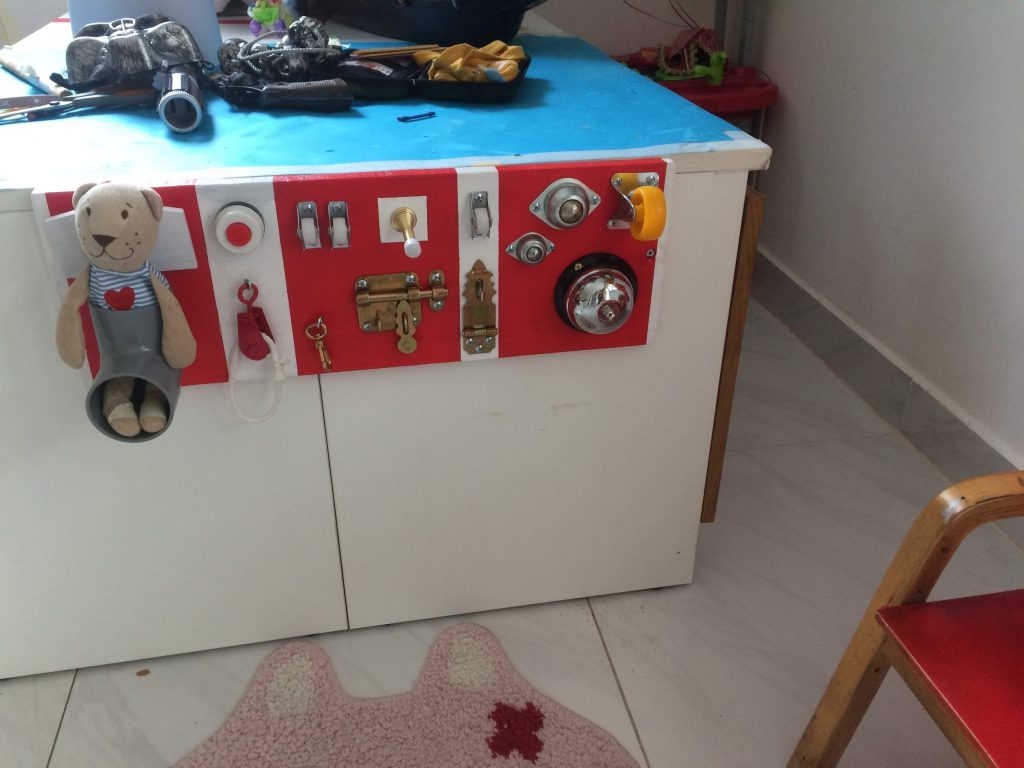
The sensory board lets kids relax and focus, play with their favorite fidgets, and all that while learning a multitude of life skills.
Please Pin and Share in Your Groups. A custom busy board is an easy way to help all kids boost their own skills
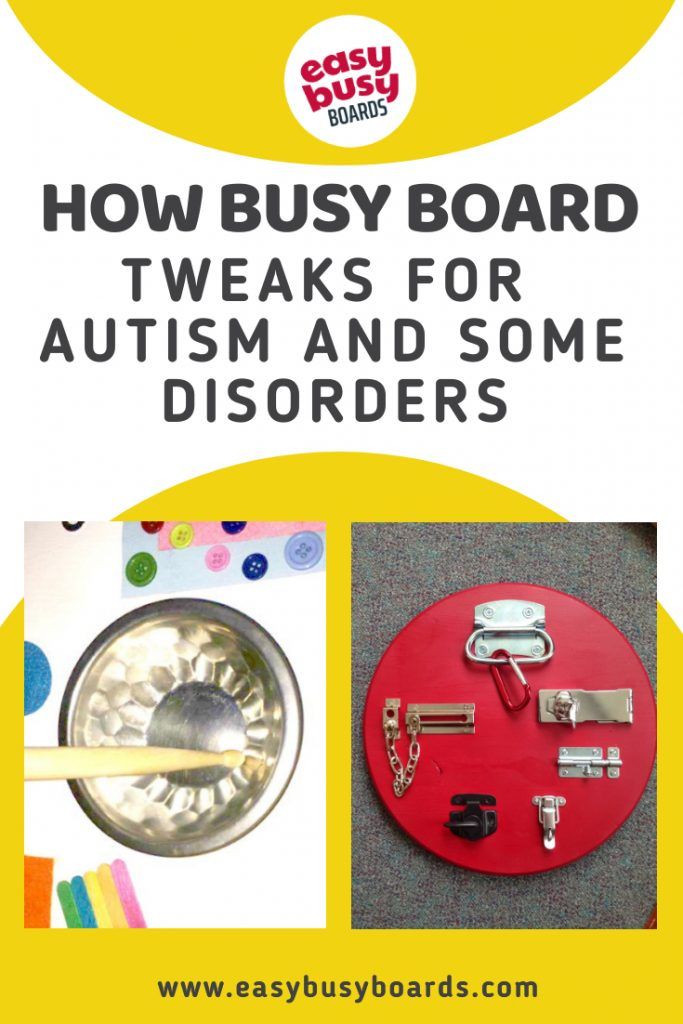
We hope that the article gave you an idea about how the busyboards can be tailored to the most diverse range of various kids’ abilities. These wonderful toys are very multifunctional and long-lasting. And the best part? Now anyone can make them – find out how.
***
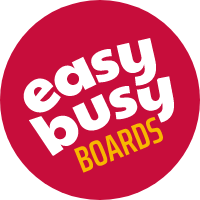
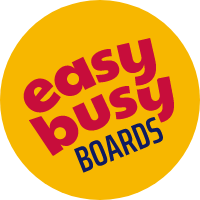
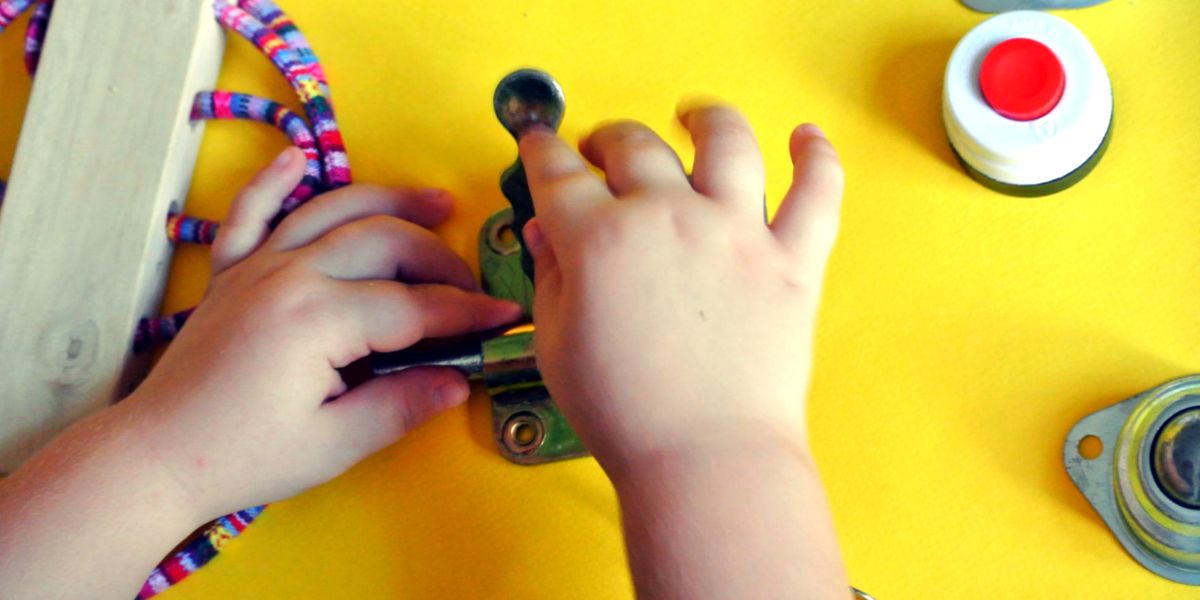
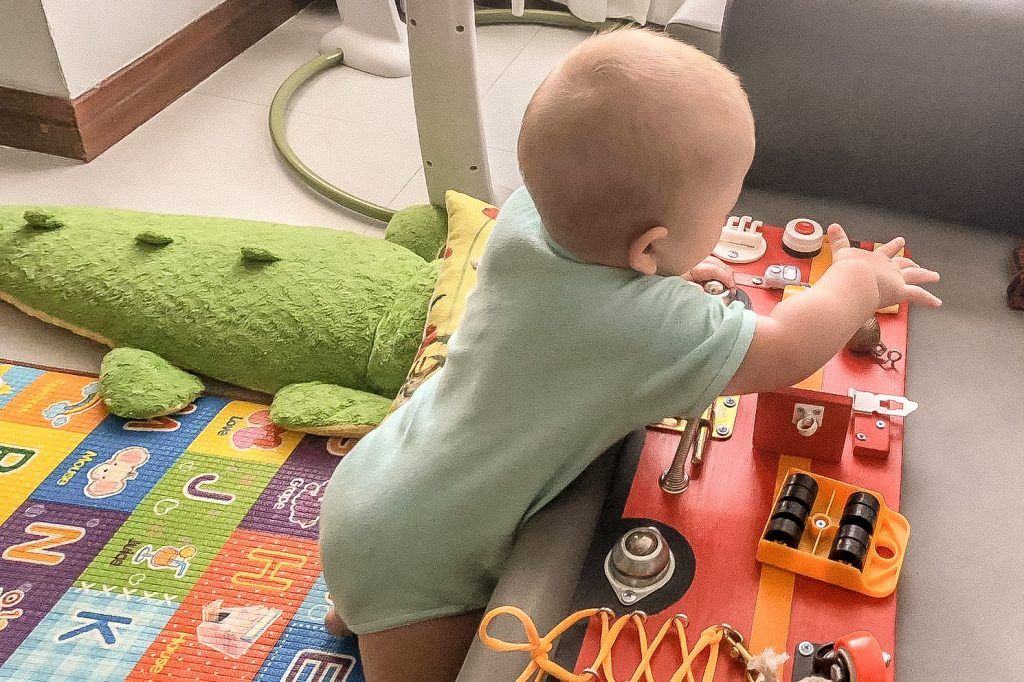
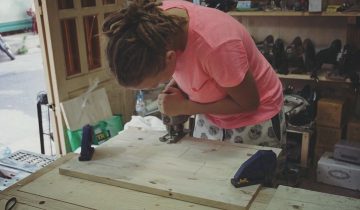
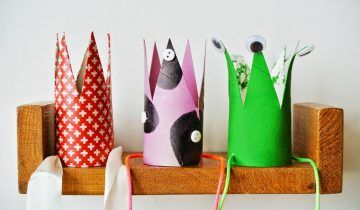
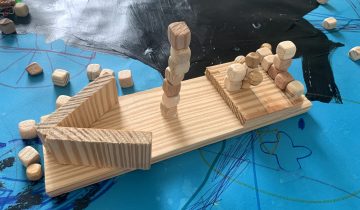
 No products in the cart.
No products in the cart.
As somebody who has worked with Autistic children in the past, some of these methods would have such a positive impact on their learning and development x
Lucy | http://www.lucymary.co.uk
Thank you, Lucy, it is so important for parents to get it from someone with an educational background! I, too, keep hearing from different people that busy boards make Autistic kiddos very happy.
Thanks for your comment! – Vera